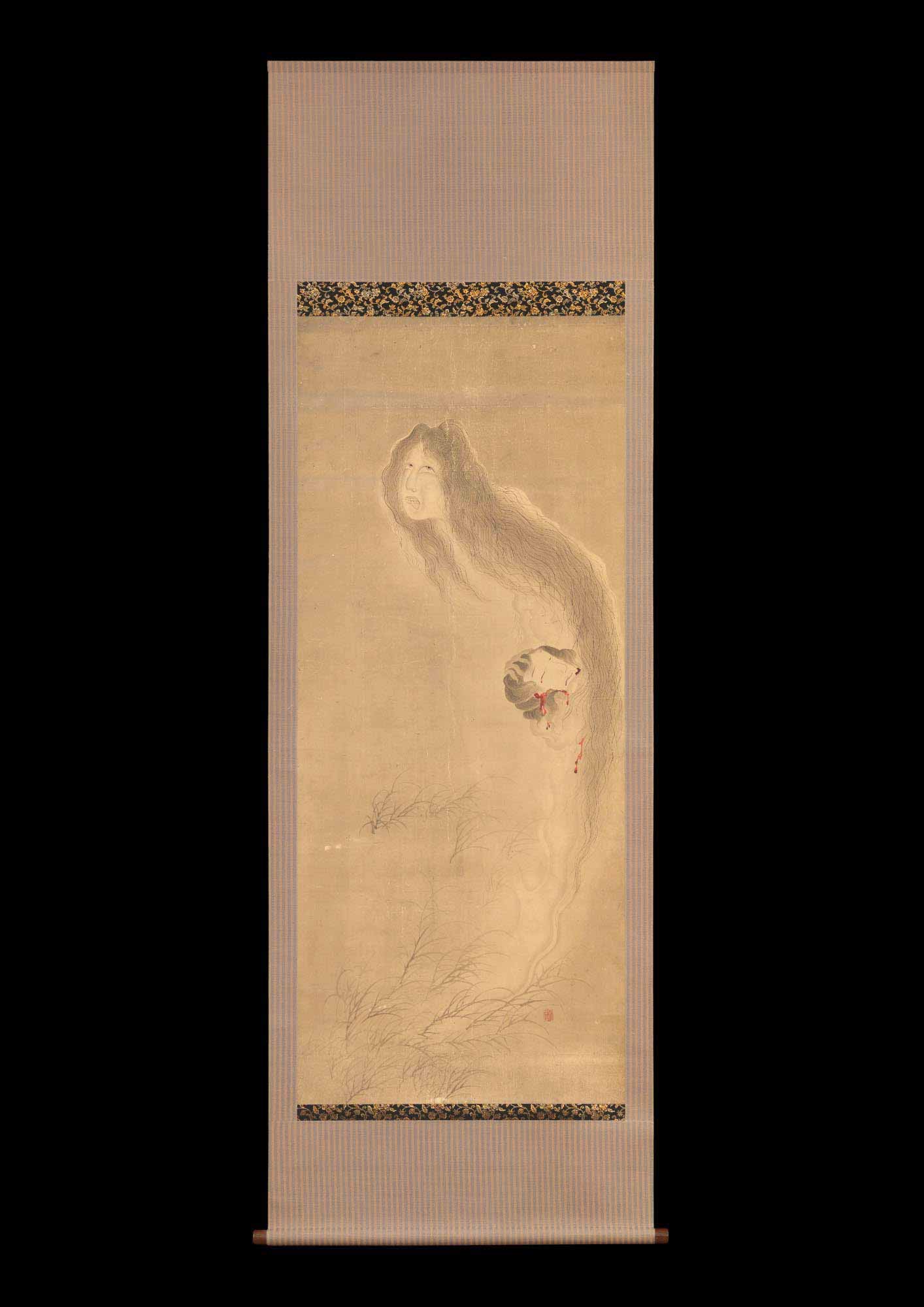Yūrei with a cut head
Paintings
- Contact Us
-
Material
Scroll, ink on paper, silk mounting
-
Size
130,5 (h) x 54,3 cm [194 (h) x 63,5 cm]
-
Period
Edo-Meiji period, 19th century
-
Published
"Supranatural" by Galerie Mingei, 2018
Description
Yūrei (ghost) with a cut head
A ghost of a woman is consumed with rage and fright. Even after death, her ill will keeps her soul on earth so she can take revenge on the living. Her clenched teeth express her seething resentment. Her long-disheveled hairs are rendered individually with black ink. They contrast with her pale skin and the very sketchy outlines of her body, which emerges from a desolate field where cadavers would have been abandoned.
She firmly grasps a head which is dripping blood, holding her other hand up in the air, like Salome asking for the head of John the Baptist for her dance. The head appears to shed tears of blood, which is meticulously colored red, lending realism to the subject and suggesting that the decapitation was recent. The flesh of the head which still holds the feeling of life contrasts with the pale dim ghost whose only well-defined feature is its hair.
Women used to wear their hair very long in Japan, and having long and beautiful hair was very important to them. Cutting one’s hair meant separating oneself from the material world and from love, jealousy, hatred and desire. It was associated with being nun-like and austere, and hair on the other hand was a symbol of a woman’s beauty and her sexuality.
Hair was moreover seen as having a relationship with the divine, and not only for women. The Japanese word for “hair” is “kami” and the name of the god “kami” is a homophone for it. Hair was considered to harbor spiritual power, and so were decorations for it like combs. In the Kojiki ("Records of Ancient Matters”), the oldest written history and mythology of Japan, the first god on earth used his comb to escape from the uncleanness of death. Hair symbolized the soul and life.
Conversely, dishevelled hair symbolizes an abnormal mental state, and that is clearly apparent in Noh masks. Long hair was considered holy, but when not properly groomed, it was seen as eerie and frightening. An example is the Japanese horror movie titled The Ring, in which long hair represents an uncanny and unnerving human presence. In most paintings of ghosts, they are rendered with long, unkempt hair, which people find terrifying and alarming.


